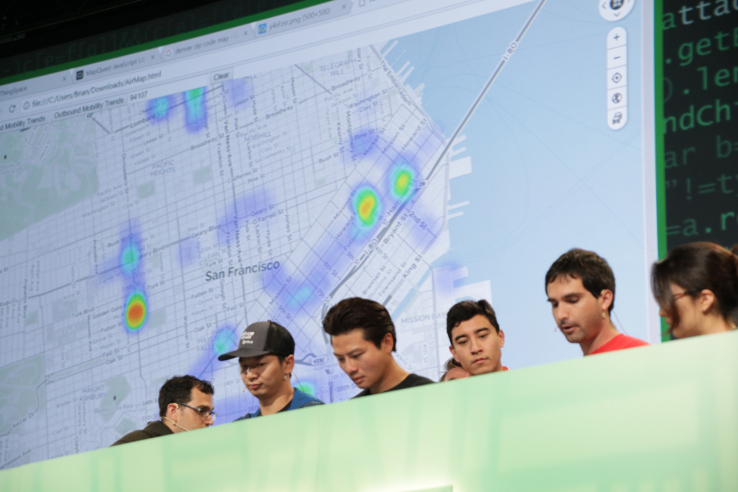

If you’ve walked down 4th Street in San Francisco these days, you’ve probably been hit with a massive dust cloud from all the construction — and seen a bunch of people trying to breathe through their shirts or covering their mouths.
Air quality is a huge issue these days and zeroing in on the worst spots in the city is probably one of the best things you can do to figure out how to dodge those kinds of zones. But instead of just memorizing those spots, a hack at TechCrunch Disrupt SF 2017 called Air Map is looking to help figure out those spots that are the worst. Using Arduino quality sensors, Air Map can deploy a network that can figure out parts of the city with the best air quality so you can figure out the best way to get to and from work every day.
“We believe this kind of system would be more powerful in the future,” Brian Cottrell, one of the developers on the project and an engineer at DirecTV, explained. “As more progress is made on reducing air pollution, it becomes more difficult to make further progress. You can take care of all the easy problems, and then you’re left with more difficult ones. You still have to get people from one place to another.”
It’s partially inspired by some of the air quality problems in China, where there’s a bit of a competitive incentive to try to improve the air quality in cities, Shinae Hong said. Hong’s team put the hack together in 24 hours at the hackathon this weekend — so, of course, it’s just a small project right now.
“Between government and government, they compete with each other to do better,” Hong said. “By installing the sensor in transportation, you can see in real time which locations have better air quality. They can regulate the manufacturing or any creepy stores burning garbage, so they can tune the law and enforce it.”
Still, it’s a problem that’s important to both of them and the rest of the people that worked on it. Hong and Cottrell say there’s an opportunity to help with city planning, where it can figure out where people are coming and going in order to determine ways to improve the air quality in local areas.
“I think it’s good to have this kind of system in place, and I think right now people are still focused on the easier challenges to solve,” Cottrell said. “They are working on older cars and things that are a little more obvious. This is a good framework for future fine-tuning cities to upgrade efficiently and get those air quality readings down even further. Between everyone, there’ll always be some work going on.”

